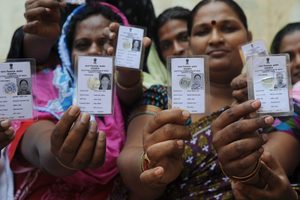By Christina Zampas, Senior Legal Advisor at Amnesty International
The recent Indian Supreme Court judgment holding that transgender persons have a right to legal recognition was an inspiring reminder to me of why I became a human rights lawyer. Pushing the boundaries of human rights has incredible significance, especially for those who lack a voice because they are not recognized as who they are.

Transgender persons across the globe face discrimination in employment, ability to travel, and accessing housing and medical care, in part, because their official identity documents do not reflect their gender identity. Amnesty International’s recent report, The state decides who I am: Lack of legal gender recognition for transgender people in Europe, documents the impact such barriers have on the enjoyment of their human rights.
The Indian Supreme Court’s decision, which relied on the Constitutional guarantees of non-discrimination, equality and freedom of expression to protect transgender rights, was ground-breaking. And if implemented correctly, it will mean that some of these barriers transgender persons face in exercising their human rights will be dismantled – a step towards enabling them to live their lives out of the shadows, have their identities respected and be treated no differently from anyone else.
The Court recognized the failure “…lies in the society’s unwillingness to contain or embrace different gender identities and expressions, a mindset which we have to change.” And that constitutional protections cannot be restricted to binary genders of male or female. The Court became part of the change when it issued this judgment, not only because it recognized this failure, but also in the tools it used to do so. In grounding its judgment in international human rights law, the Court clutched human rights principles that are enshrined in international legally binding agreements and breathed life into them.
The Court also relied heavily on the Yogyakarta Principles, a set of international principles relating to sexual orientation and gender identity drawn up in 2006 by a distinguished group of international human rights experts in response to well-documented patterns of abuse. The Indian judgment marks one of the first comprehensive applications of the Yogyakarta Principles by any national-level court in the world. The Court noted that constitutional protections must be read in harmony with these international human rights protections. In doing so, it found that, “Each person’s self-defined sexual orientation and gender identity is integral to their personality and is one of the most basic aspects of self-determination, dignity and freedom”.
The Court also provided a history of transgender persons in India who went from being revered in Indian mythology and scriptures to being criminalized under British colonial rule. In uncovering traditions that were more open and tolerant before they were attacked by colonial laws, the Court is making a crucial statement in today’s climate where ‘traditional values’ are being pushed in some countries – including India – to curb freedom of expression and criminalize consensual same-sex conduct.
While the Indian Supreme Court’s judgment steered clear of addressing section 377 of its own Penal Code which criminalizes consensual same-sex acts – in a disastrous decision in December 2013 it punted this matter to the parliament – it did recognize that the provision has been used as an instrument of harassment and physical abuse against transgender persons.
This decision and other measures like it across the globe illustrate the persistence and prevalence of the problem. We have a long way to go before the promise that all people are born free and equal in dignity and rights becomes a respected reality. Until such a time, we will continue to push the boundaries of human rights, to ensure they are enjoyed by all.
Read more:
India: Supreme Court transgender verdict must lead to repeal of criminalization of homosexuality (Press release, 15 April 2014)A tale of two identities (Blog, 10 February 2014)
The state decides who I am: Lack of legal gender recognition for transgender people in Europe (Report, 4 February 2014)

